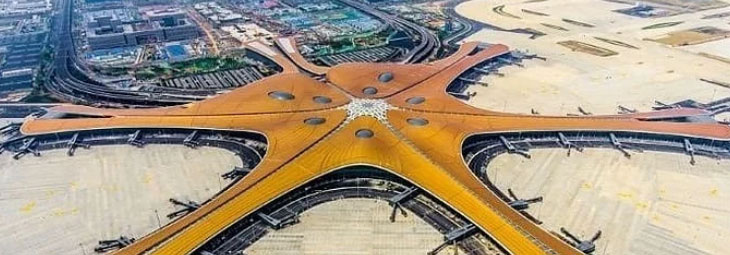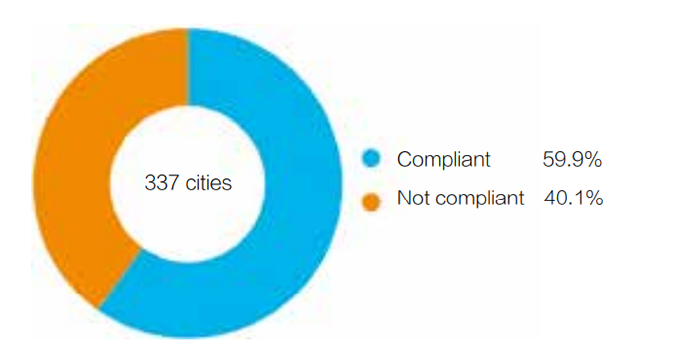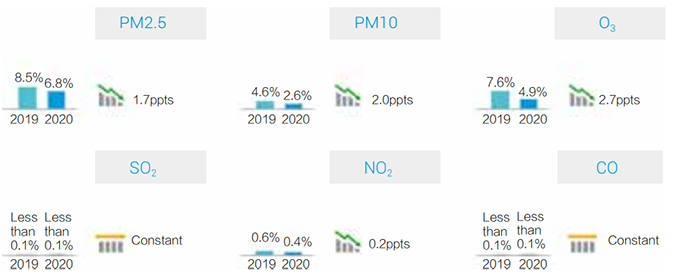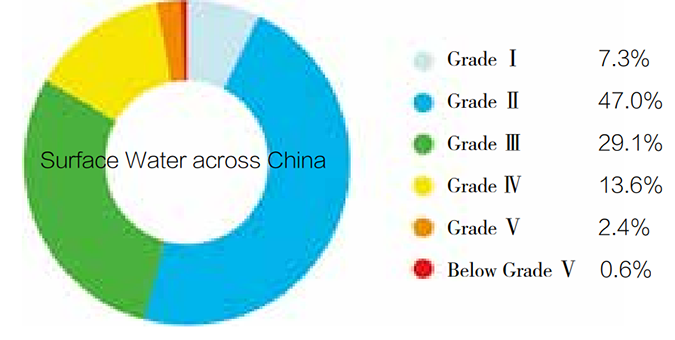

1. Atmospheric Environment Quality Control
1.1 Overall Status of the Atmospheric Environment Quality
According to the 2020 Bulletin on the State of Ecological Environment in China, 202 out of 337 cities at prefecture-level and above across China met atmospheric environment quality standards in 2020, an increase of 13.3 percentage points from 2019. The average number of days with good and moderate air quality in 337 cities was 87.0%, an increase of 5.0 percentage points from 2019.
The number of days exceeding the standards with PM2.5, O3, and PM10 as the primary pollutants accounted for 51.0%, 37.1%, and 11.7% respectively of the total number of days exceeding the standards. Compared with 2019, the concentrations of the six pollutants of PM2.5, O3, PM10, SO2, NO2, and CO have all decreased; the proportion of days with SO2 and CO exceeding the standards remained the same, and the proportion of days with the other four pollutants exceeding the standard all declined.

Figure 1-1 Atmospheric Environment Quality Compliance Status of 337 Cities in 2020
(Source: 2020 Bulletin on the Status of Ecological Environment in China)

Figure 1-2 Proportion of the Number of Days for Each Grade of Atmospheric Environment Quality Compliance Status of 337 Cities in 2020
(Source: 2020 Bulletin on the Status of Ecological Environment in China)

Figure 1-3 Inter-annual Comparison of the Concentration of Six Pollutants 337 Cities in 2020
(Source: 2020 Bulletin on the Status of Ecological Environment in China)

Figure 1-4 Inter-annual Comparison of the Proportions of the Number of Days with the Six Pollutants Exceeding the Standards in 337 Cities in 2020
(Source: 2020 Bulletin on the Status of Ecological Environment in China)
1.2 Distribution, Causes, and Control of Smog
In 2020, there were 7 large-scale smog events occurring across China, which was the same as in 2019. The average number of days with smog occurring is 24.2 days, which is 1.5 days less than in 2019. In July 2020, China promoted research topics such as the Causes of Heavy Atmospheric Pollution and Governance Project and achieved some breakthroughs in key technologies in terms of cause mechanism, impact assessment, prediction and forecast, decision-making support, and precise control, and gradually clarified the cause of heavy air pollution in regional autumn and winter.
From 2016 to 2020, all localities and departments have accelerated the in-depth management of key industries, promoted the adjustment and optimization of energy structure, promoted the adjustment and optimization of transportation structure, and carried out comprehensive treatment of air pollution in autumn and winter, among others, and fully completed the management tasks of the Blue Sky Defense Action, overfull filling the overall goals and quantitative indicators.
2 Water Environment Quality Control
2.1 Overall Status of Water Environment Quality
According to the 2020 Bulletin on the State of Ecological Environment in China, the combined proportion of state-controlled water sections (spots) with good-quality surface water reaching Grades I, II, and III was 83.4 percent in 2020, up by 8.5 percentage points from 2019; and that of water sections (spots) with bad quality surface water below Grade V was 0.6 percent, down by 2.8 percentage points from 2019.
In 2020, the combined proportion of state-controlled water sections (spots) with good-quality surface water reaching Grades I, II, and III in the seven major river basins of the Yangtze River, the Yellow River, the Pearl River, the Songhua River, the Huaihe River, the Haihe River and the Liaohe River, as well as the rivers of Zhejiang and Fujian, the northwestern rivers, and the southwestern rivers was 87.4 percent in 2020, up by 8.3 percentage points from 2019; and that of water sections (spots) with bad quality surface water below Grade V was 0.2 percent, down by 2.8 percentage points from 2019.
2.2 Major Water Pollution Incidents and Pollution Control and Treatment
In January 2020, the MEE and the Ministry of Water Resources jointly issued and distributed the Guiding Opinions on Establishing a Joint Prevention and Control Mechanism for Sudden Water Pollution Incidents in Trans-provincial River Basins to promote the strengthening of cooperation between the upstream and downstream of trans-provincial river basins and establish a joint prevention and control mechanism for sudden water pollution incidents targeted at effectively preventing and responding to sudden water pollution incidents in trans-provincial river basins and properly dealing with disputes and preventing major ecological and environmental risks.

Figure 2-1 The Overall Water Quality of Surface Water across China in 2020
(Source: 2020 Bulletin on the Status of Ecological Environment in China)

Figure 2-2 The Overall Water Quality Status of the National River Basins in 2020
(Source: 2020 Bulletin on the Status of Ecological Environment in China)
3 Soil Environmental Quality Remediation
3.1 Overall Status of Soil Environmental Quality
According to the 2020 Bulletin on the State of Ecological Environment in China, the soil environment of agricultural land across China was generally stable in 2020, and the main pollutant affecting the soil environmental quality of agricultural land is heavy metals. According to the 2019 China Soil and Water Conservation Bulletin, the total area of water and soil erosion across China was 2,710,800 square kilometers. Compared with 2018, the area of water and soil erosion across China decreased by 26,100 square kilometers, registering a decrease of 0.95%.

Figure 3-1 Change in the Area of Water and Soil Erosion across China
(Source: 2019 China Bulletin of Soil and Water Conservation)
3.2 Major Soil Pollution Incidents and Pollution Control and Treatment
In January 2021, the MEE and relevant ministries and commissions jointly issued the Interim Measures for the Identification of Persons Responsible for Soil Pollution in Construction Land and Interim Measures for the Identification of Persons Responsible for Soil Pollution in Agricultural Land, which provided a basis for launching the identification of responsible persons and further implement the responsibility for pollution under the circumstances of ambiguous responsible persons for soil pollution or the existence of disputes.
3.3 Soil Remediation
The report of the National Conference on Ecological Environment Protection in 2021 pointed out that the pollution-free land defense action advanced steadily in 2020. At present, the safe utilization rate of contaminated arable land in China has reached about 90%, and the safe utilization rate of polluted plots has reached more than 93%; a pilot project for the construction of “waste-free cities” has produced a batch of replicable and popularizable demonstration models; a special inspection and remediation action for hazardous waste was carried out in a total of 47,000 enterprises and more than 200 chemical parks and pollution control of key tailings dams in the Yangtze River Economic Belt has been completed.